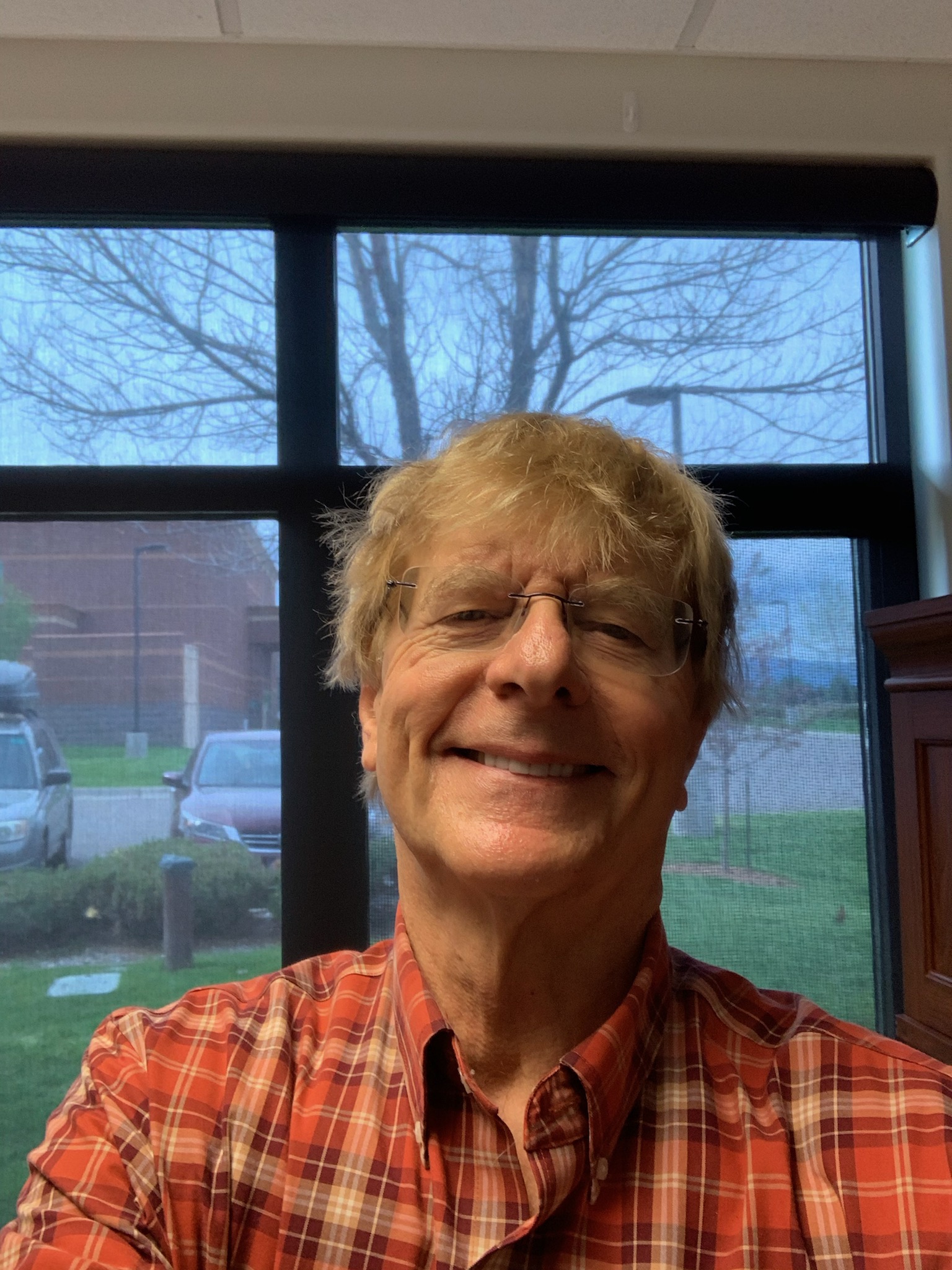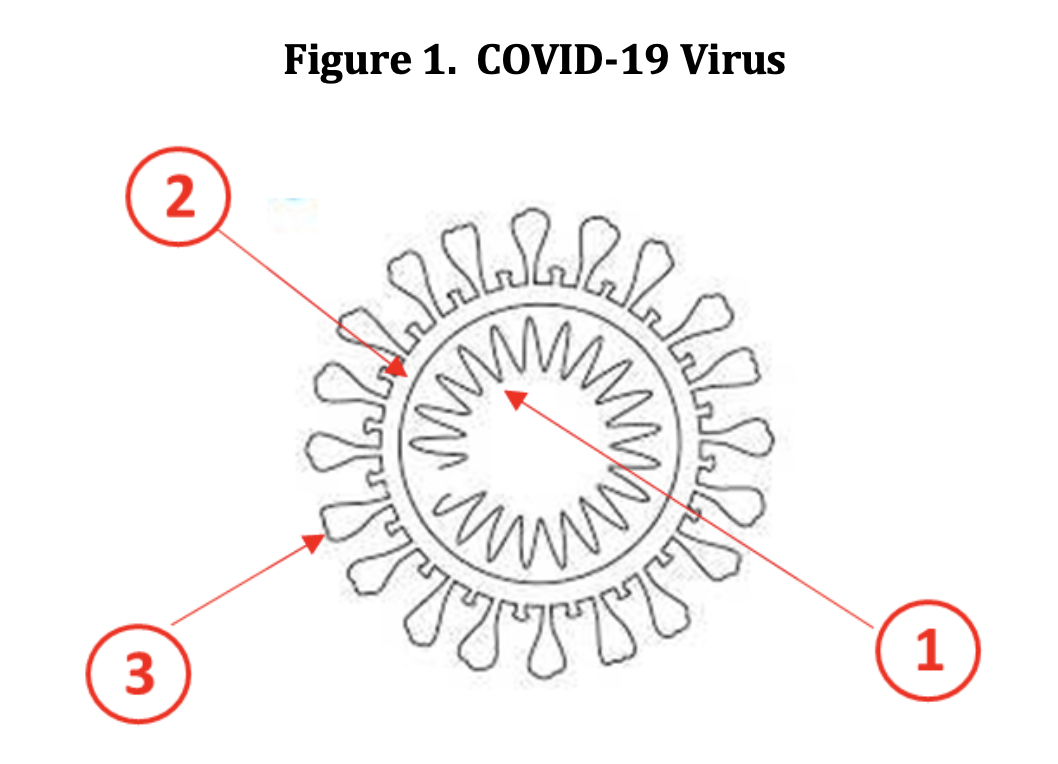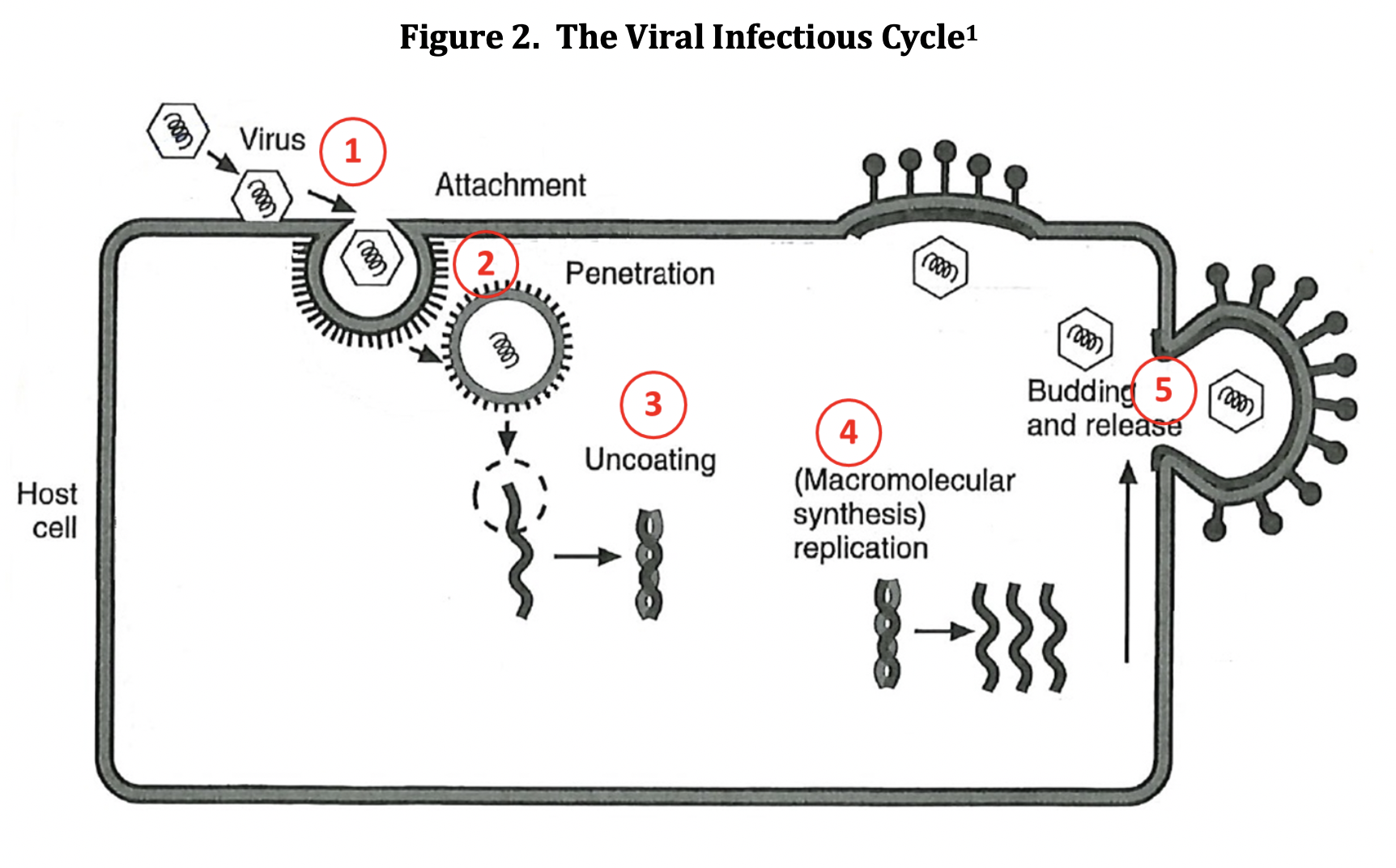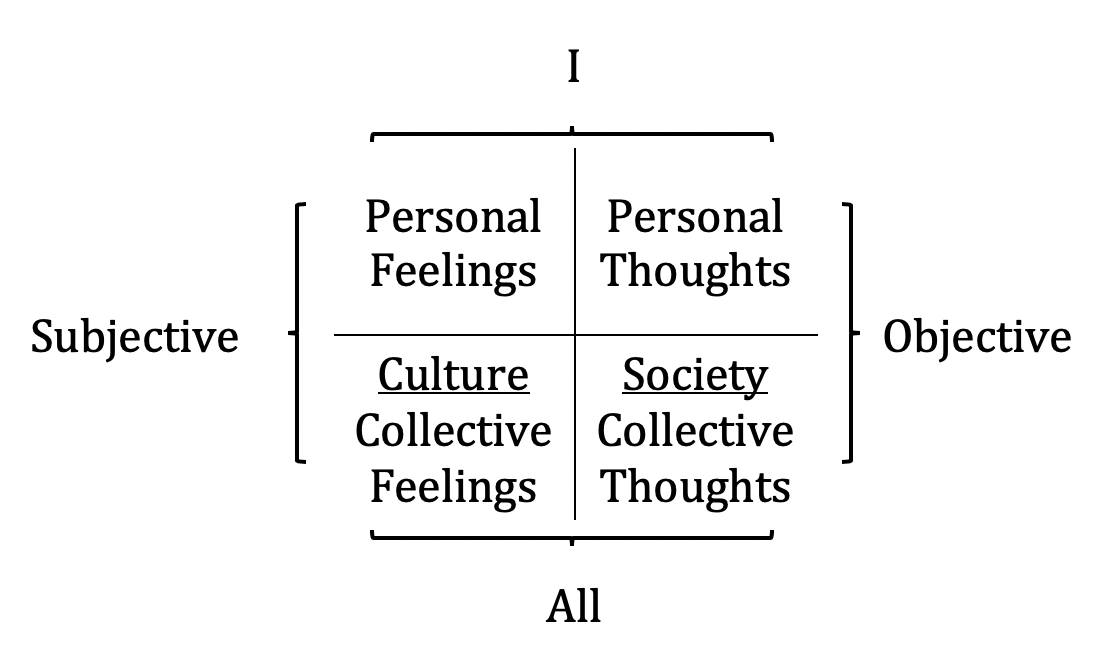by Daryl S. Paulson, PhD
BioScience Laboratories, Inc.

The coronavirus has been on this planet for years and changes from time to time. COVID-19 is the strain of coronavirus that is causing the current pandemic. The virus’ original host was animals, but in Wuhan, China, it switched hosts to humans. The virus mutated slightly in its replication process to become the COVID-19 strain, which is formally 2019-nCoV. It is an RNA (ribonucleic acid) virus, meaning that it needs the RNA in a human cell to reproduce. Through an electron microscope, it appears as an imperfect circle with portions that are erect or looks like a crown and, therefore, is termed the “corona” for crown virus (Figure 1).
Figure 1. COVID-19 Virus

The virus is composed of three simple structures:
1. the inner core of ribonucleic acid,
2. a capsid or a shell around the inner core, and
3. glycoprotein spikes.
Let us look at this entire situation via Wilber’s four-quadrant model and taking it further by viewing these points by looking from within and looking from without. There are many ways to view this virus pandemic: objectively, as I have been describing it, for example. Let us continue into the personal objective, looking from both sub views.
The COVID-19 is a very fragile virus due to its outer shell, which is susceptible to drying. When individuals have this type of flu – it is a respiratory flu – they cough and expel a number of the virus particles through their cough and moisture droplets. Many of the viruses are destroyed within a minute from drying outside the body. Some are embedded in the sputum and can exist for 30 – 60 minutes, until it dries. But perhaps some viruses are breathed into a human body via the lungs and their infectious cycle begins.
Figure 2. The Viral Infectious Cycle[1]

The coronavirus is a strict intracellular (it can only live inside a human cell) parasite that relies exclusively on the host cell to replicate itself.
- Attachment: This is the adsorption stage, where a suitable human cell is found to invade. The virus attaches to that cell with its glycoprotein spikes.
- Penetration: In this stage, the virus is inside in the cell wall and fuses with the host cell. This is called syncytia (detection of syncytia is used to determine diagnostically if a person has the COVID-19).
- Uncoating: When the virus is within a host cell, the capsid or envelope is removed. This uncoating is required for the virus to share its RNA with the cell’s RNA system.
- Macromolecular Synthesis: This is the production of nucleic acids and protein polymers. Viral transcription of messenger RNA (mRNA) encodes the viral protein to make more viruses.
- Viral assembly: This is the assembling of the envelope surrounding the virus RNA for COVID-19. The envelope is acquired during the viral budding, which usually occurs on the endoplasmic reticulum and the cytoplasmic membrane, i.e., the membrane surrounding the human cell wall.
The COVID-19 and other coronaviruses are released through “budding” with minimal human cell damage.
Immune System
When the virus is new and has not been recognized by human defenses, that is, the human’s immunocytes, the COVID-19 virus can replicate freely. However, shortly after entering the human body, its immune system detects the virus (antigens), it begins to produce antibodies or B-cell and C-cell derivatives against it, and the virus is destroyed. A secondary infection, such as a bacterial infection like Streptococcus pneumoniae, is common afterward. It is wise to get exposed to this virus rather than not contact it unless one is immunocompromised, suffer from serious health conditions, or are old and feeble.
Let’s look at this from Wilber’s four-quadrant model, we have:
Figure 3. Four-Quadrant Model

The four-quadrant model can provide eight views, two from each quadrant. The first view is from inside each quadrant looking out. The second view is from outside the quadrant looking into it. We just did this with the objective section – the virus/human host perspective. Let us continue this, beginning with the society.
Lower Right-Hand Quadrant: Society
From within our society, there has not been something like this since 1918, when US citizens contracted the Spanish influenza. The Food and Drug Administration (FDA), Center for Disease Control (CDC), the President, the Senate, the House of Representatives, as well as the governors of each state, are responsible for deciding what is the best course of action during these times, relative to our society. However, they have not determined what the best course of action is, and this produces many mixed signals. Many cities are on lock-down with vast numbers of people unemployed, with no one knowing the best course of action, because this situation was not expected to happen. This was done in case there were so many cases of the virus that the hospitals were overrun. There is another problem: there are experts in their fields, epidemiology and economics, but there is little or no integration of between these two areas. If we listen to the epidemiologists and stay at home, we will certainly face unemployment and catastrophic economic decline. If we listen to the economists, we will have our jobs but probably massive amounts of the flu.
The news media has somewhat distorted this situation in order to have more viewers and subscribers, and this has caused much panic throughout society. Look at the last epidemic of the swine flu: it killed more people than this flu. But it is hard to know what the numbers actually are. And looking at our future, another, broader aspect is that this pandemic will obviously cause a financial disaster, with so many people being at home not allowed to work. These people cannot pay their house and car payments, or even buy food. The institutions to whom they owe money cannot be paid, and this will keep spiraling, but hopefully not out of control.
And the wearing of masks and staying away from people will not build up healthy herd immunity, and it will increase the chance of getting COVID-19 in the future.
From the outside of our society looking toward it, when some countries and some organizations are not telling all the truths, then terrible things happen. The virus epidemic originated from Wuhan, China, probably in the food district or worse, the Biosafety Level IV facility. The virus used animals as hosts but transferred into the human population. This is not really known, because as the virus was running its course, the Chinese government chose to not tell other societies the extent of the problem. The World Health Organization, led by Tedros Adhanom, did nothing to warn people.
Lower Left-Hand Quadrant: Culture
From within our culture, or the subjective part of all of us who live within the United States, we are in this together but with much news appearing on the television or the internet, we get very confused, because they slant their reporting toward all the causes they believe in. People, when afraid, always tend to believe the worst. People have run to stores, taking all the toilet paper, rice, paper towels, soaps, and detergents, as well as buying guns and bullets for this, because they do not trust the news organizations nor the government and believe it is up to them to feel safe and secure. People feel alone and not united but terrified and upset.
Our culture is not one unified culture but many unique subcultures all fighting to be heard.
As social psychology has demonstrated over and over, there is fear of the unknown, and people try to cope by placing blame. One has to place a reason for this flu on something external to feel better.
Outside of our society, looking toward it, we have seen what happens in one country and then another, and we also expect that to happen here.
Personal Subjective Quadrant: Feelings
Within each person, they feel very insecure and vulnerable. For example, we are told that this flu will attack the old, yet many 20- and 30-year-old people are infected with COVID-19, so we become more frightened and insecure. We see that gloves and masks are worn by some, so we wear them too, out of a need for security. The government placed an order keeping people from going to work at their job site. But this ban has caused people to brace for more uncertainty. In systems thinking, we understand people buying or wearing, let us say masks, so we buy and wear the same thing (Figure 3). When this is multiplied by many more people, then nearly everyone buys more. It does not matter if they are effective. It just diminishes people’s fears.
Figure 3. Systems Thinking Diagram

The general concerns are their health, keeping their jobs, and providing safety and security for their families.
People, such as a young woman, divorced with two children and going to college, will become a casualty with unemployment benefits providing only two-thirds of her pay with no tips. Reduced income will force her to make difficult choices, because she cannot pay for both her car and her rent. Multiply this by all the people in the USA and you begin to see the problem. It is not solely a medical problem, nor is it a Republican vs. Democratic problem we have. The general concerns are their health, keeping their jobs, and providing safety and security for their families.
Looking outside into our own or our friends’ feelings, we get caught up in their fears, and we both magnify it. The news prints a story about the deaths in the United States or more individuals contracting COVID-19. They do not inform us the flu has infected many more people because more people are being tested.
Integration
Wilber has stated that every quadrant is connected to the others and hopefully integrated into all of the four views. This pandemic is the first part of what may become a financial depression, if we do not integrate the rest of the quadrants. The depression may be a mild one, but it is coming.
Whenever one follows only one belief system such as epidemiology and stays inside and cannot work from home, our entire economic system suffers. However, if no one listens to the epidemiologists, then the virus will keep spreading. The people under 60 who are in good health seem to have little problem, so why is it that they cannot go back to work? What is needed is integration; everyone should wear the N95 masks and go about their work.
We need to view outside of this crisis. We need to recognize this epidemic. We also need to be aware of the economy; we all need to be aware of the subjective influence of each of us, as well as our culture’s way of dealing with this crisis. We need to see our society move us in the right direction. All of these views are true but partial. Yes, there are many mistakes in the process, but we are humans growing and developing in the first, second, and third tiers, and we must work together, not in separate silos, walled off from each other. As Wilber stated, everyone has an important piece of the truth. After all, we are all – every one of us – in this mess together.
References
[1] *Modified from Murray PR, Drew WL, Kobayashi GS, et al, editors: Medical Microbiology, St. Louis, 1990, Mosby.
Daryl S. Paulson, PhD is a scholar-at-large in transpersonal and integral studies. He is also President and CEO of BioScience Laboratories, Inc., a medical research facility. Paulson has taught courses in transpersonal psychology, psychosynthesis, and Integral Psychology. He formerly was a member of Wilber’s Integral Institute, where he served on the core Integral Business Group. He is the author of fourteen books and numerous articles, covering many diverse topics, including statistics, microbiology, business, psychology, the Vietnam War and various art subjects.
